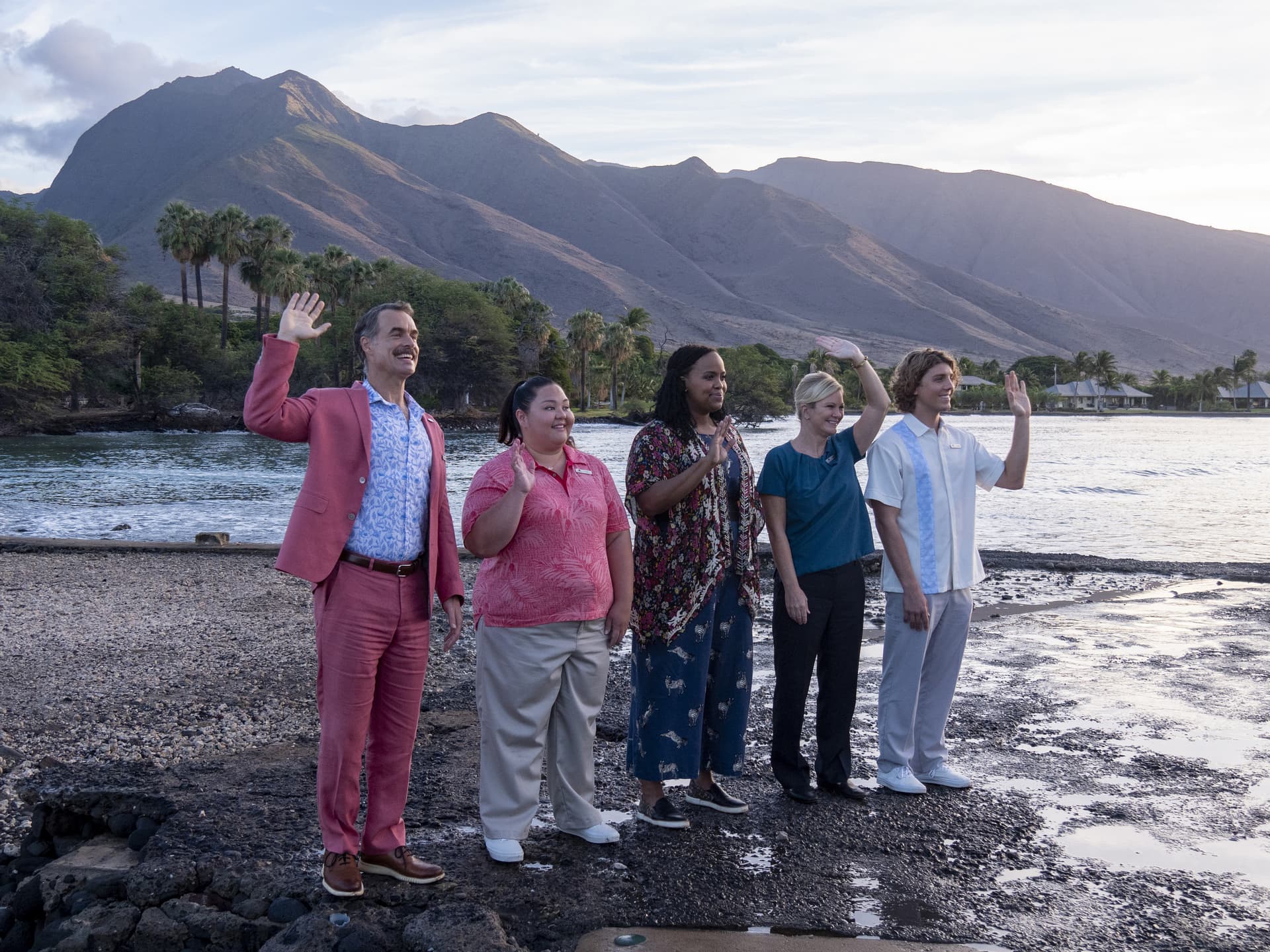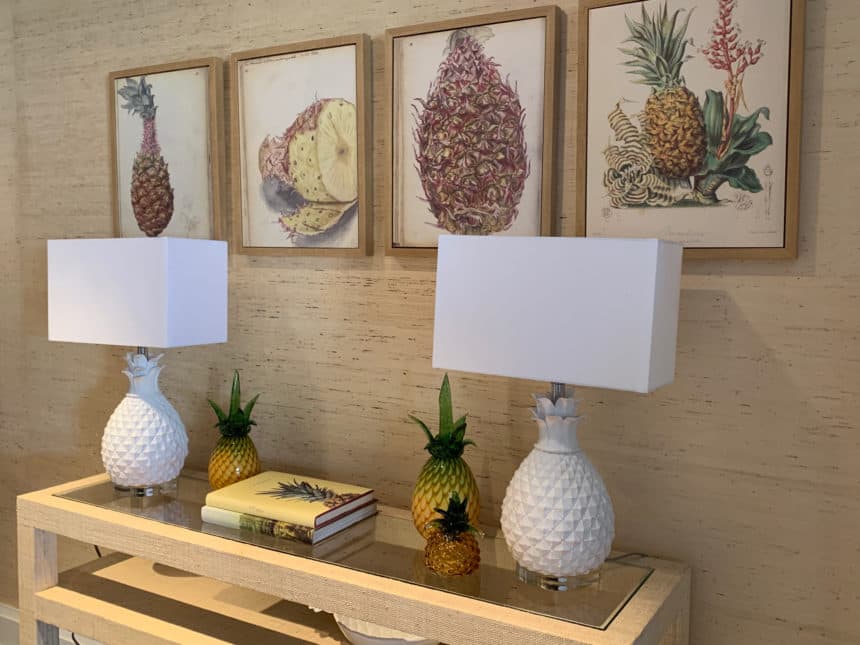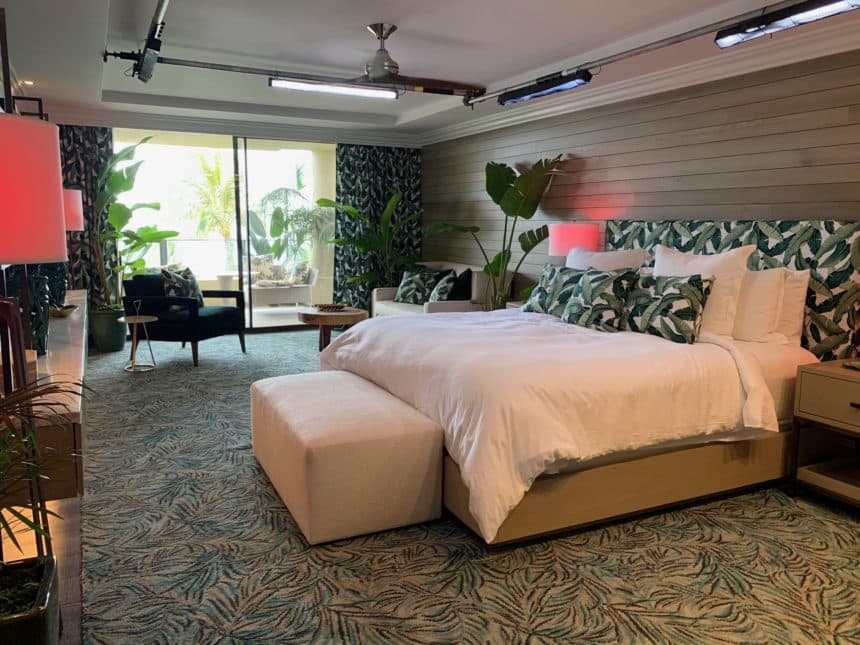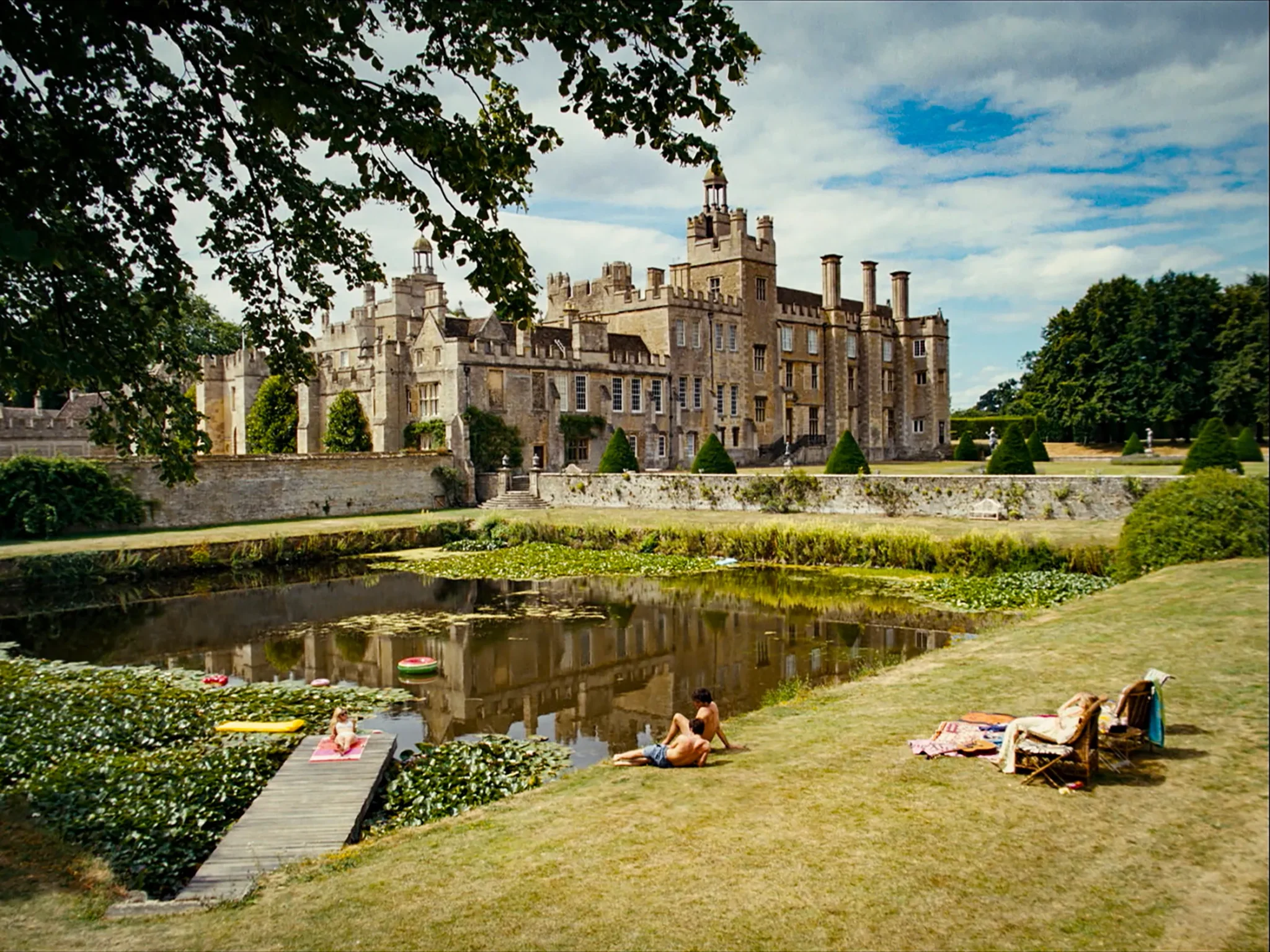In our ongoing series Screening Room, we go behind the scenes with the uber-talented production designers and set decorators of today’s most visually alluring TV shows and movies for a deep dive on how they whipped up such indelible backdrops. This week: production designer Laura Fox, the creative mastermind behind the dreamy, luxe, and slightly surreal interiors at the titular five-star Hawaiian resort in The White Lotus, HBO’s latest satirical series featuring Connie Britton and Jennifer Coolidge.

“This would never have happened without the pandemic,” says Laura Fox. “And it was literally a once in a lifetime experience that I’m forever grateful for.” The production designer, best known for music videos for the likes of Janet Jackson and Eminem, is talking about her latest gig: creating the world of The White Lotus, the new limited series on HBO masterminded by writer-director Mike White. Certainly the circumstances of the show were pandemic-specific: it was greenlit because it takes place, much like a play, almost entirely in one locale—in this case, the grounds of a luxury hotel in Hawaii where an eclectic group of guests is gathered including Jennifer Coolidge’s bereaved Tanya, and unhappy newlyweds Rachel and Shane, played by Alexandra Daddario and Jake Lacy. But Fox is also referencing how and where she worked—a unique opportunity thanks to COVID-19. In ordinary times it would have been impossible to commandeer a real-life hotel for weeks on end, both financially and logistically, and instead she’d have been tasked with recreating a five-star property on a non-descript soundstage. In 2020, though, many hotels in Hawaii suspended operations for months in response to the precipitous drop-off in tourism. One of them was the 380-plus room property of the Four Seasons Maui, which she transformed into The White Lotus.
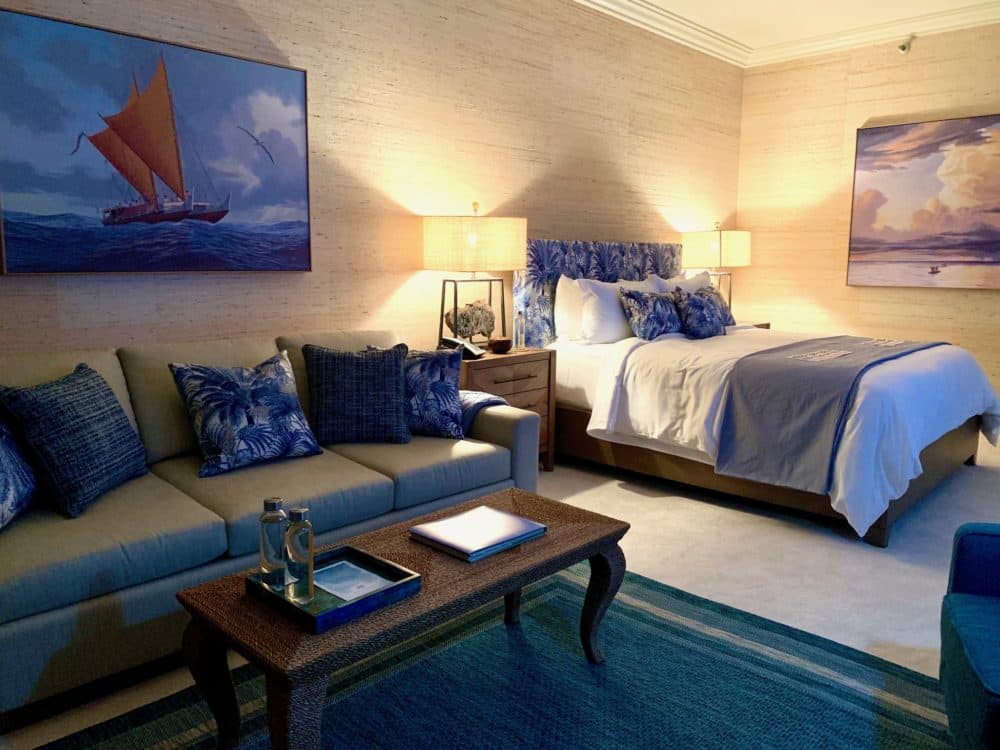
The bedroom in the Tradewinds suite at the fictional White Lotus.Courtesy of HBO
Fox, however, could do nothing until she’d completed quarantine at the Four Seasons, which ended up acting as both home and workplace for the entire cast and crew during the weeks-long shoot. She was one of the first to arrive and passed eight days alone in her room. “It was like being in The Shining, but at the ocean,” she laughs. Stuck inside, she festooned every surface with fabrics and watercolors—trials for how she’d remodel the suites earmarked for filming onsite. She then emailed images of her room to the art director, quarantining in his own room close by, so he could tweak them with photoshop—extending the curtains, perhaps. “Unlike at most locations, we had the rooms for so much longer, so we had time to layer things slowly and steadily instead of just throwing the kitchen sink at it,” she says.
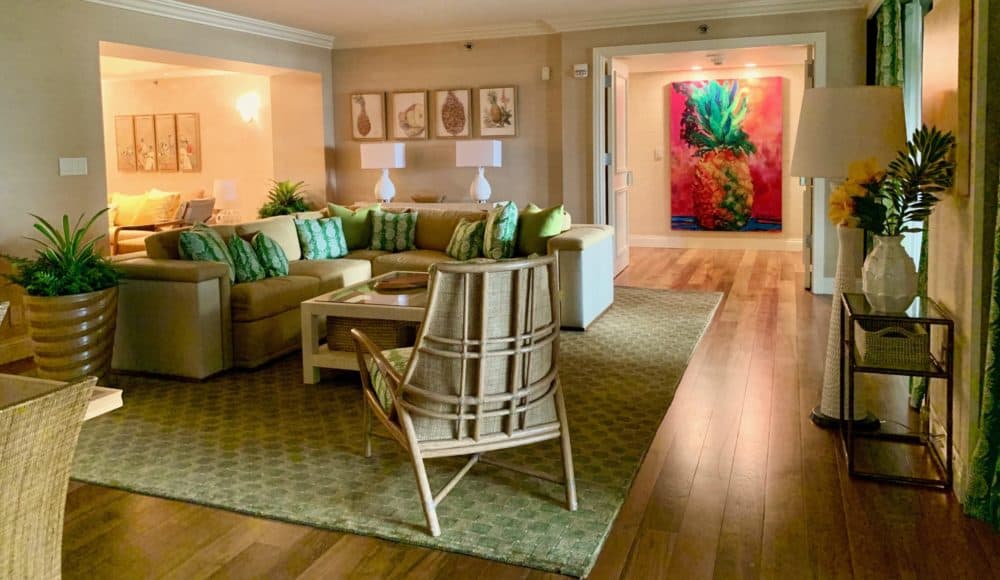
The living room of the Pineapple suite.Courtesy of HBO
The challenges Fox faced were two-fold. Firstly, she was redesigning, rather than starting from scratch. The advantage of the Four Seasons was its sense of place, an authenticity absent from any soundstage, but she was also tightly restricted in any changes she could make, like the ban on painting any walls. So instead, she emptied the four suites in which most filming would take place, removing all furniture and covering the carpets she wasn’t permitted to pull up. “It was mostly about getting the blank canvas of the room and the views of Hawaii, and then rebuilding them up with our color palette and our themes.” She even brought in a draper who worked full-time throughout the production stitching drapes, headboards and pillows, the key tools in transforming the property.
The second challenge was bigger and aesthetic. Fox knew she had to strike the right balance between creating a plausible luxury hotel and the slightly surreal surroundings fitting to the dramedy’s satirical tone. Put simply, the décor had to be more make-believe than Marriott—and she used one detail above all as a subtle signal to that. “There must be 30 palms in the Palm Suite, and you’d never find a real plant in a hotel room—we broke all the proper hotel design rules like that,” she explains. “It was about dialing it up slightly to be over the top but still feel rich and expensive. I often use the word ‘ugly-beautiful’ because it’s not just about going over the top.”
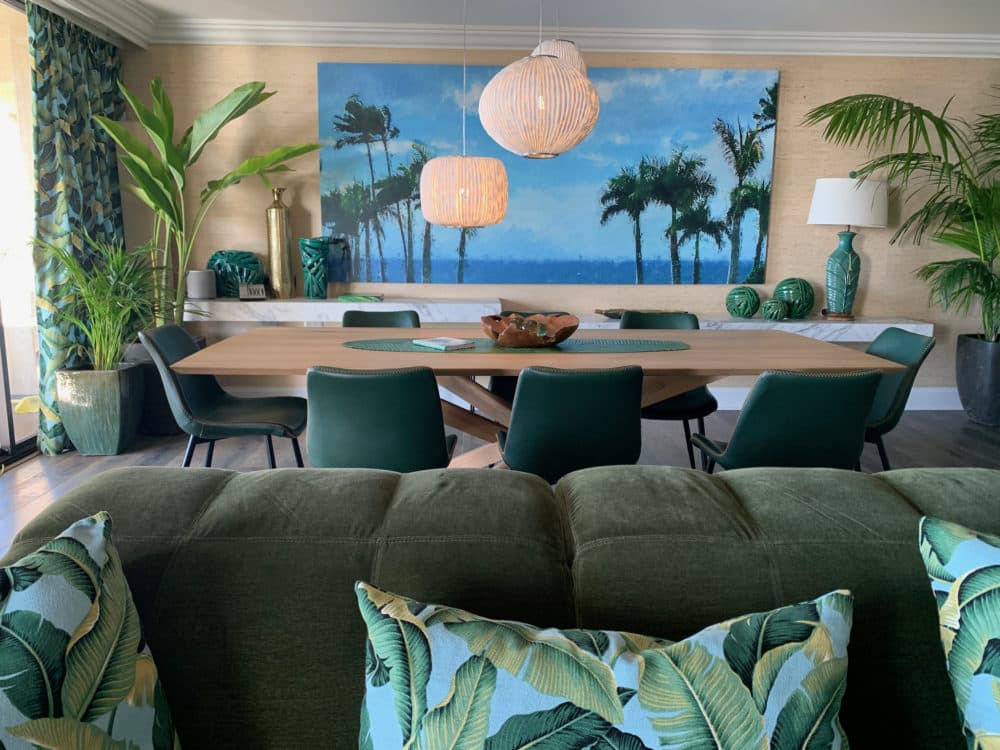
Fox added close to 30 real palms to the Palm suite to hit that over-the-top, luxe note.Courtesy of HBO
Note the relentless commitment to theming in each of the named rooms, too. There’s barely a surface or object in the Pineapple Suite that doesn’t nod to its name. “Anywhere I could put one, I did: the lamps, the artwork, every glass. It was really fun because it was so ridiculous.” Squint at the bookshelves in each suite, too, and you’ll spot one of Fox and her team’s waggish details. The books on them also follow the suite’s theme—and most of them were titles made up by the decorating crew with custom-designed dust jackets.

The pink-hued Hibiscus suite.Courtesy of HBO















